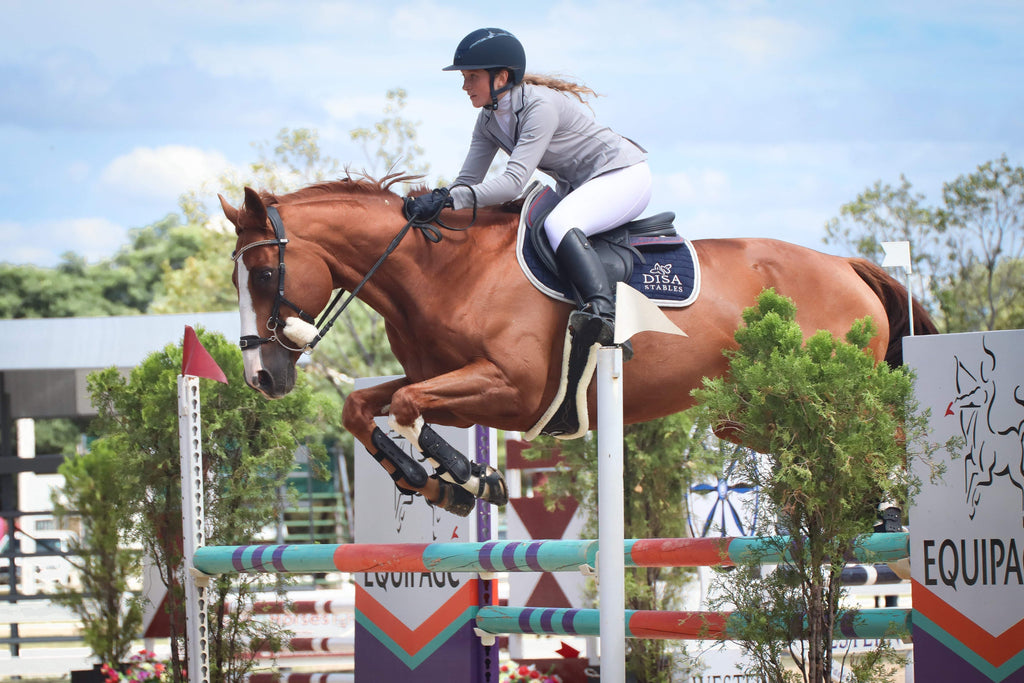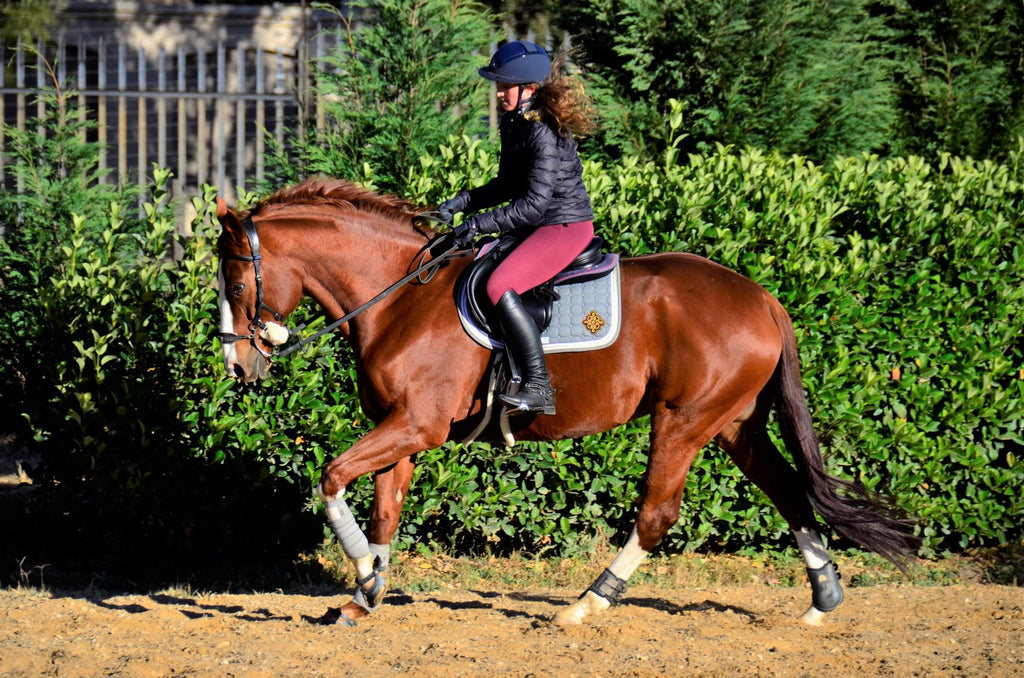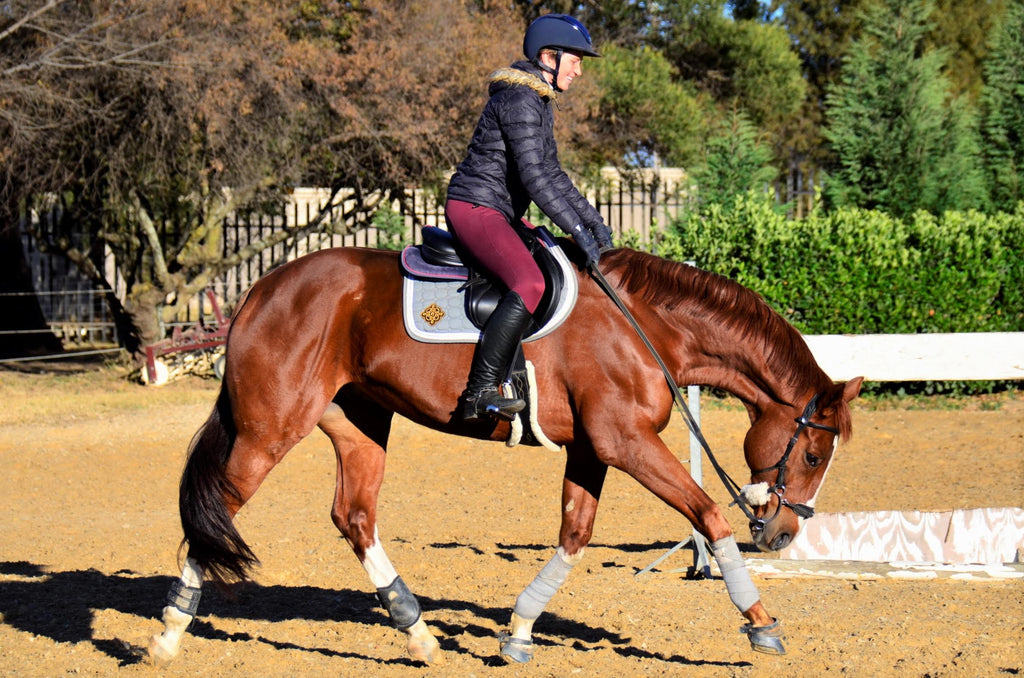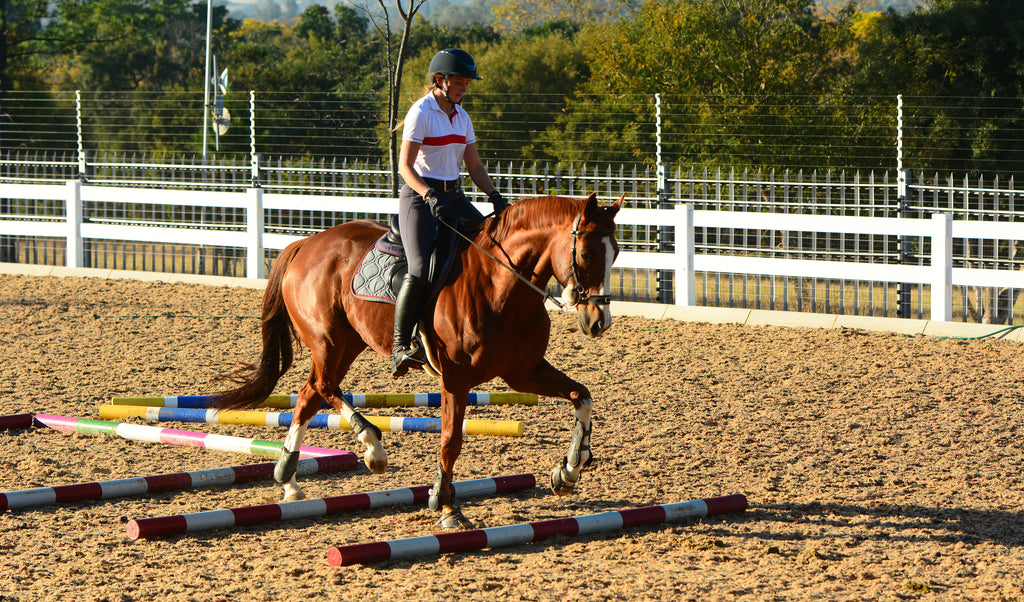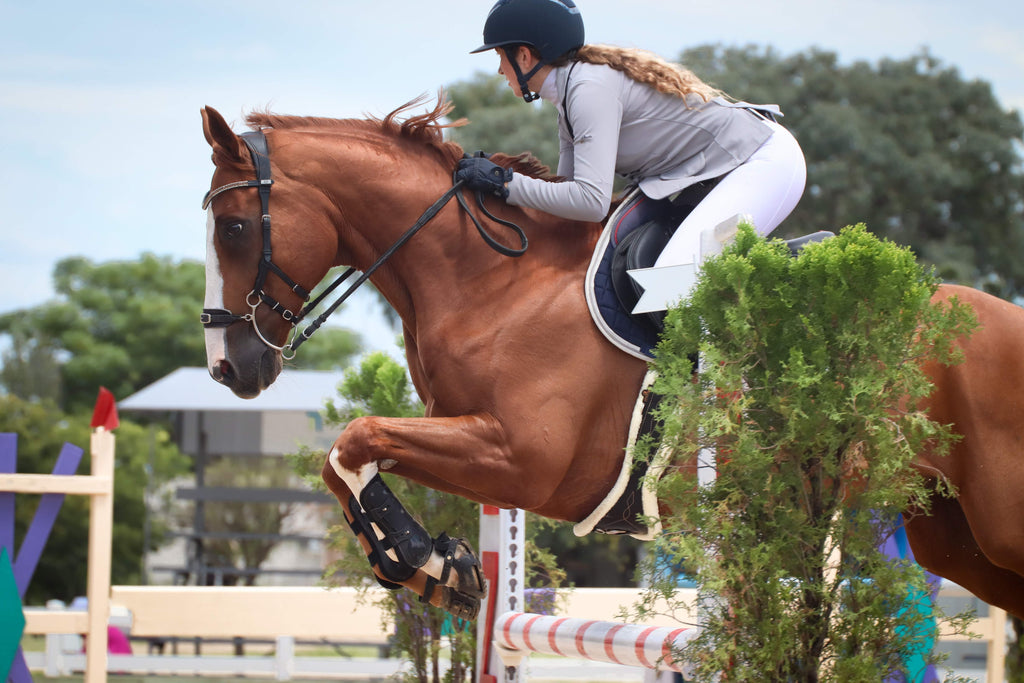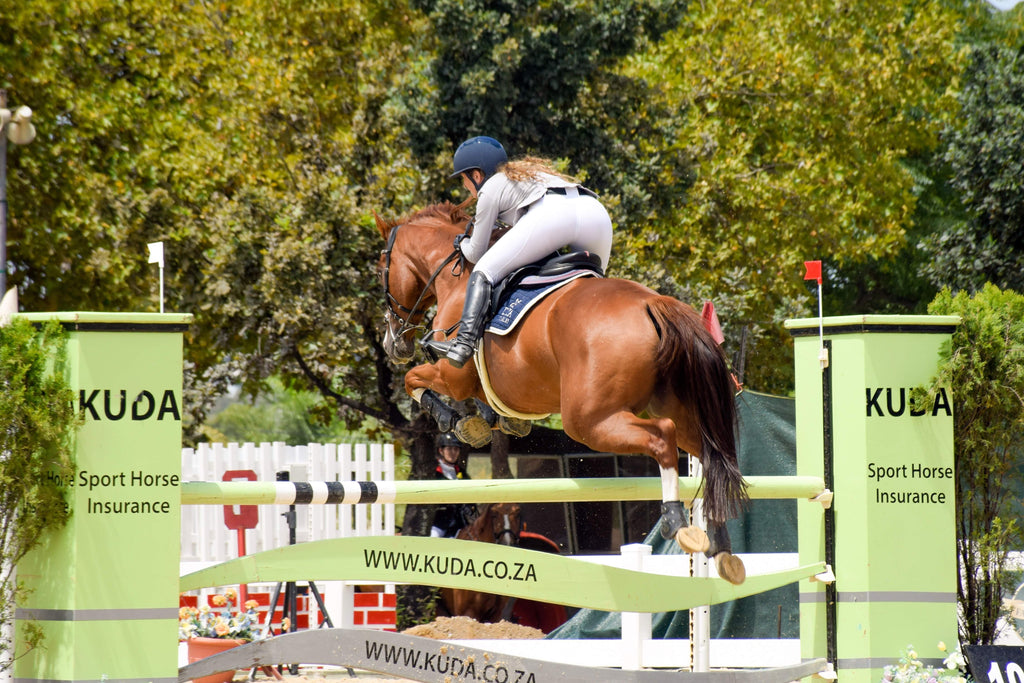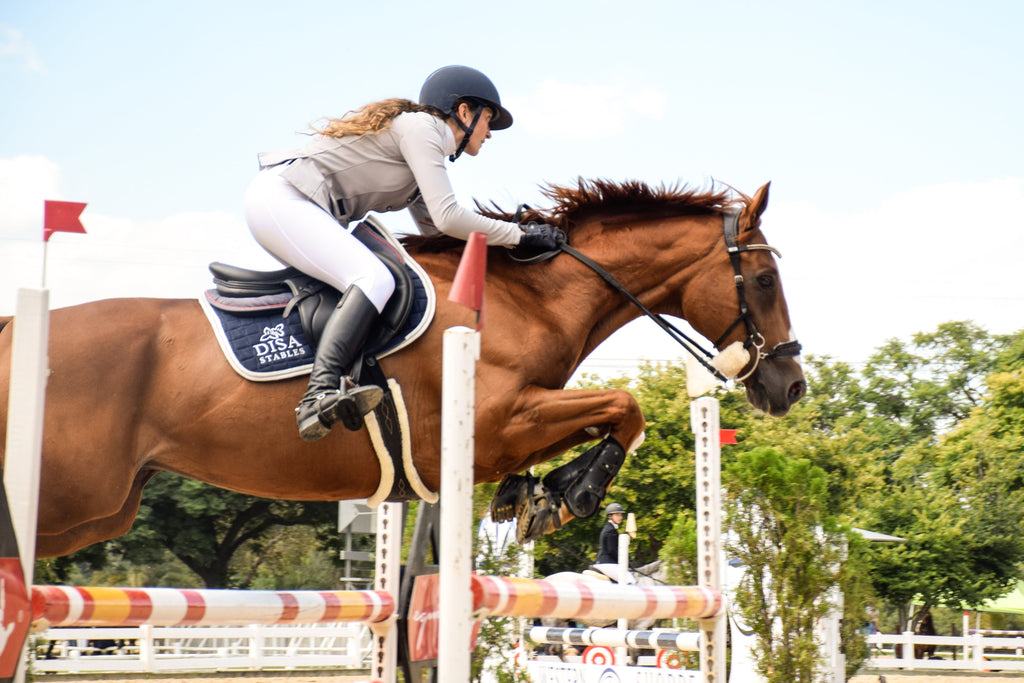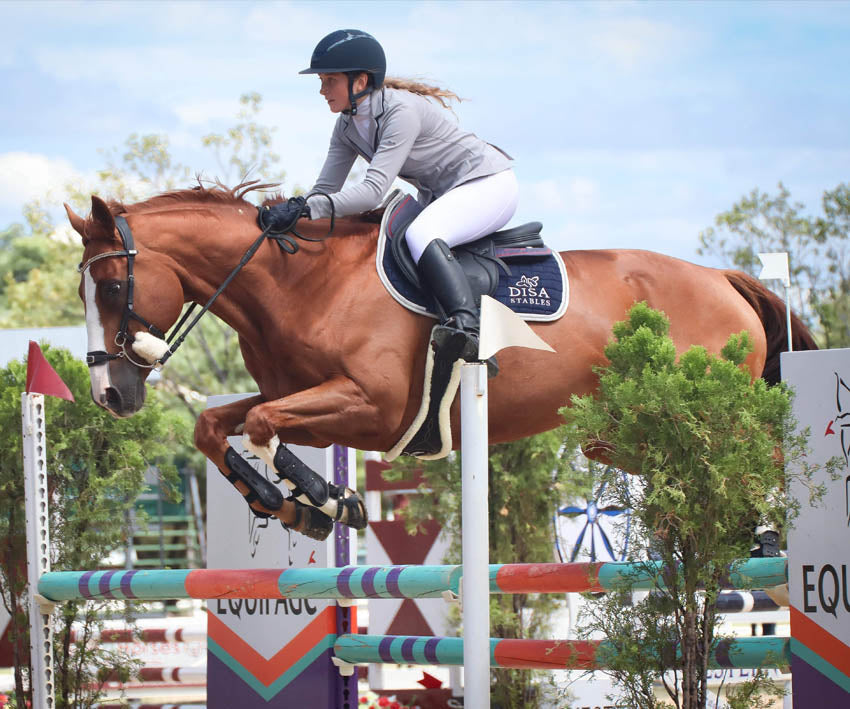
From ‘Horrible Hooves’ to Barefoot, Sound Hooves
Share
Amy & her Crazy Red Chestnut
Does your horse lose shoes? Maybe you can relate to this story…
Amy Blair is a 23 year old rider currently living in South Africa. She is a competitive showjumper in the 1.20/1.25 class with her OTTB gelding Coogs, who she has owned for the last 6 years.
Coogs had always had ‘terrible feet’ and was pulling shoes left and right. However, one day, Coogs had an awful experience where his shoe broke off the side of his hoof wall, injuring Coogs and causing a lot of pain and distress. This was the last straw for Amy and she finally decided to begin her barefoot journey.
This is her story…
Can you Tell us a Little Bit About Yourself and Your Gelding, Coogs?
I am a student, 23 years old and currently living in South Africa. I have a degree in human genetics and physiology which I absolutely love, but my heart is deep into the world of horses. I have been riding for around 10 years now; the last 6 of those have been with Coogs.
Full Charge (aka. Coogs) is my 10 year old OTTB gelding. He is my first horse and I brought him as a 4 year old. Looking back, it was a bit of a bold move… and we definitely had a lot of ups and downs throughout those first few years. It wasn’t always easy but I regret nothing because Coogs has grown to be the most incredible horse.

He is the kind of horse that can go from jumping a super round at a show to performing his tricks and being ridden bridleless, to taking care of a novice rider on his back and everything in between! He is expressive, honest, spunky and he never says no to anything I ask of him; just perfect in my eyes.
I’m not sure who taught who more since we both started as novice show jumpers and have worked our way up the grades together. I do know for sure that there are few horses that would have worked so well for me in this journey. Coogs is my guy!
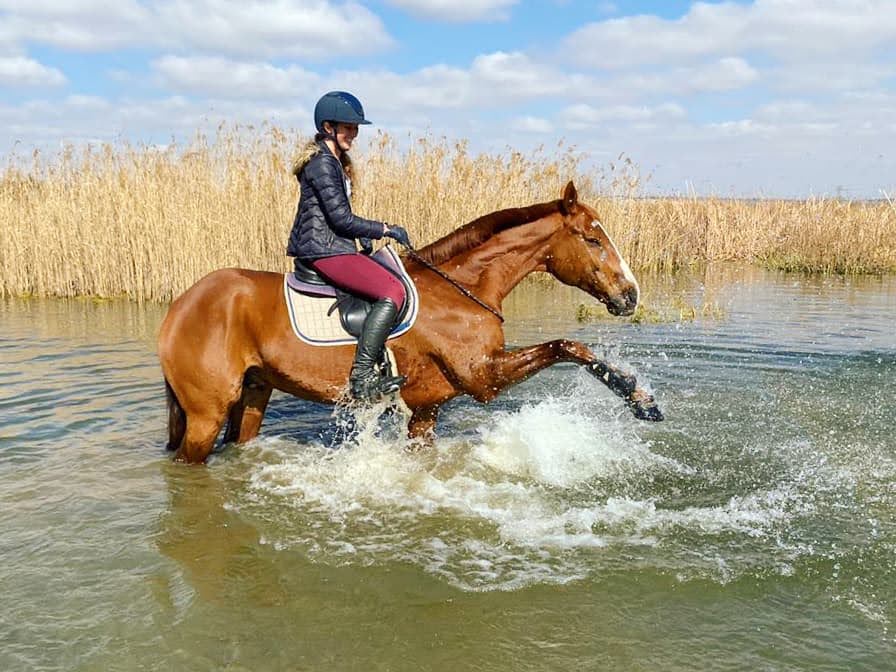
What got you Into Show Jumping? How did it all Begin for you?
During my junior years, I did a bit of everything. It was great for my riding and I really enjoyed it, but I decided to shift my focus to something specific when I moved into the adult classes.
I initially brought Coogs to event him, but he sustained a very serious injury as a 5-year old (the beginning of 2015) and it put our eventing plans on the backseat for a long time. His recovery and rehab for his injury took the better part of a year to come right.
At the end of 2016, I ended up moving into my own place and moving Coogs to a competitive show jumping stable that was closer to me. I started up lessons with a showjumping coach and I realised that there was a lot more to jumping than I had thought! From there, we just kind of fell in love with it and have been competing in affiliated show jumping events ever since!
Currently, we are both making our way up the grades together. It has been a bit of a journey because it is new to both of us, so we both have to learn and teach each other along the way. Currently, we are competing in the 1.20/1.25 classes to get our last few points before being able to jump in the open grades!

You Recently Decided to Transition Coogs to Barefoot. What led you to That Decision?
It is a bit of a roundabout story actually!
He always had ‘horrible feet’. In his pre-purchase veterinary exam, it was one of the factors that the vet mentioned to be aware of because his ‘bad hooves’ might cause problems. Years of struggling and Coogs constantly throwing shoes left me a little lost with what to do.
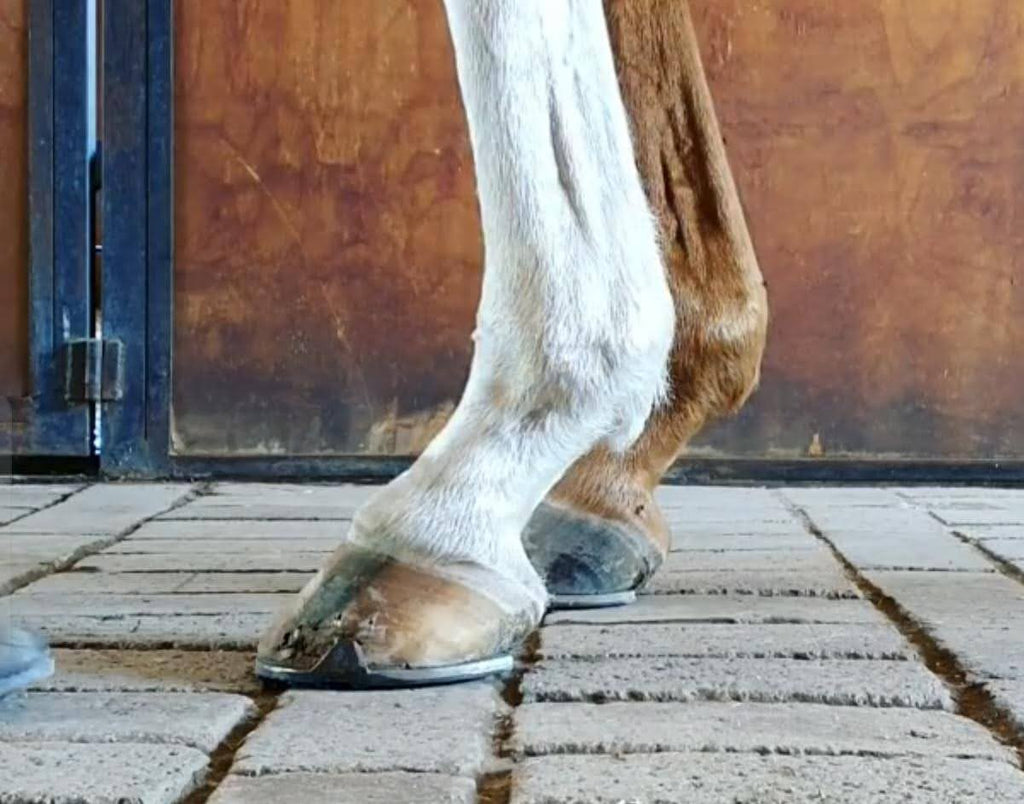

The final straw for me was when Coogs pulled a shoe halfway through a round at a show because of a slightly different step with one of his hind legs. He bruised his sole pretty badly because the shoe broke off one side of his wall and twisted sideways rather than falling off completely. So the quarter clip ended up impaling his sole on one side and ripping off the wall on the other. I decided that it was time to make a change and embarked on a journey of learning!


During my research, I discovered that apart from the convenience of not having shoes to pull, going barefoot would help strengthen his ‘terrible’ hooves and would also help with his joints as shock absorption is so much better in a barefoot hoof! After discovering this all and learning about the transition process, I phoned my farrier and told him to take off Coogs’ shoes at his next visit.

Did you Have any Fears or Concerns About Transitioning Coogs to Barefoot?
My major concern was his comfort. From all my research, I knew that a lot of horses experience a potentially long period of tenderness that can affect their soundness, comfort and performance. Almost everybody I spoke to also shot down the idea because “he could never be sound without shoes, given his bad hooves”. I was worried that I would have to give him weeks or months off work all for it to not end up working.
Another thing that concerned me, even though it shouldn’t have, is the potential judgment for other equations. I worried that if Coogs was very sore and things didn’t work out, I would just be flooded with a trail of “you’re only forcing him into unnecessary pain for no reason” and “told you it wouldn’t work” or “you won’t be able to keep him sound without shoes”.
I worried that maybe it was true and because I had no experience with taking a horse barefoot, I wasn’t sure if what I had read and been told would be true to Coogs or not. Essentially, I had this big doubt in what I wanted to try and I had to really push myself to just jump in the deep end and give it a go, despite the negative things I was told by a lot of people!
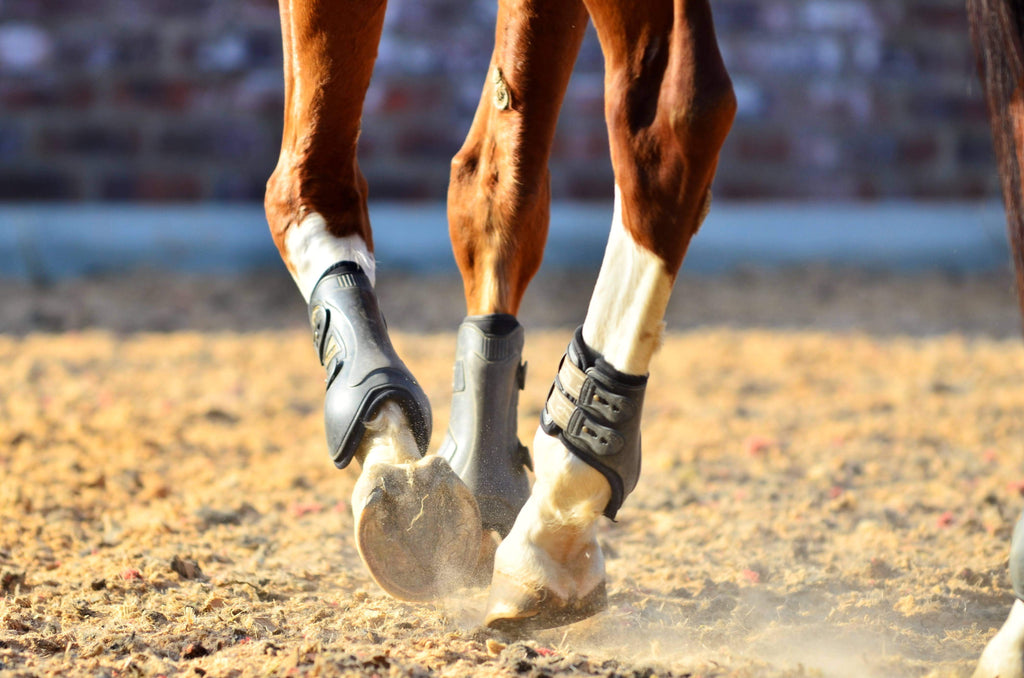
How has Coogs’ Life Changed Since Taking off his Shoes?
Definitely! I have noticed a bunch of changes in a variety of areas. The most notable change is the comfort in his joints.
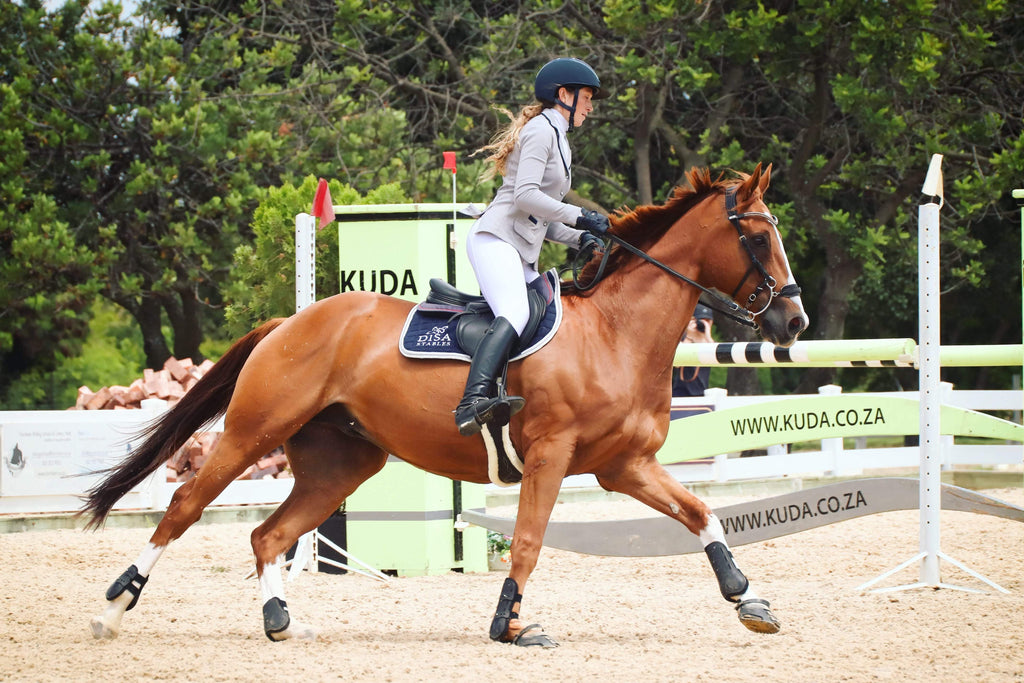
One day, he came up lame and upon examination and a series of x-rays, the vet diagnosed him with mild arthritic changes in both front fetlocks. Luckily, we caught it early so with the right management, he would be able to continue working and jumping. I took the necessary time to get him feeling good again and had his joints treated too. Since then, I have been on the ball with keeping him happy and giving him the best for his joints, including regular follow-ups with the veterinarian to see how things are doing.
He had a follow up 3 months after having his shoes taken off and my vet commented that he had never seen Coogs’ joint fluid looking so healthy. Since I hadn’t changed any other aspects of his management, I can only put this change down to taking off his shoes. The associated increased shock absorption in barefoot hooves takes a lot of pressure off the joints and transfers it into the structures of the hoof, so this change in his joint health makes perfect sense to me now!

He has been feeling absolutely fabulous and we have actually managed to push out his next follow up because he just doesn’t feel like he needs one anytime soon! His joints don’t swell as much and he hardly ever has bad days anymore.
Another thing that has changed a lot is his extension in his movement. He is noticeably over at the knee, and since taking off his shoes and having heel-first landings he has started to show much better extension in his knee joints.
You Have Chosen to use Scoot Boots on Coogs. Why did you Choose to use Hoof Boots Rather Than Keeping him Completely Barefoot?
I decided to use Scoot Boots to help make the transition process easier for Coogs. He has very flat hooves in the front, and his soles were very sensitive; even on the soft sand of the arena. With the Scoot Boots as an extra layer of protection, we were able to keep on with normal work.

The transition process was long for Coogs due to the natures of his front hooves. I chose to use the Scoot Boots for all work in the beginning. As time went on and his hooves improved, we used them less and less. Now, I only use them for trails and competitions on surfaces unlike our arena at home, but we wouldn’t have been able to get to this point so easily without having them from day 1!
Coogs has transformed from a horse that couldn’t trot out sound in a soft arena without shoes on, to a horse that can walk over coarse gravel like it isn’t even there, and it is all thanks to his Scoots being able to protect his hooves when they needed it!
Do you use Scoot Boots Whilst Competing in Show Jumping?
I have used Scoot Boots for every competition we have been to since taking off his shoes. I am not superstitious, but just about every show with them has been very successful, so I think there is possibly a trend here!
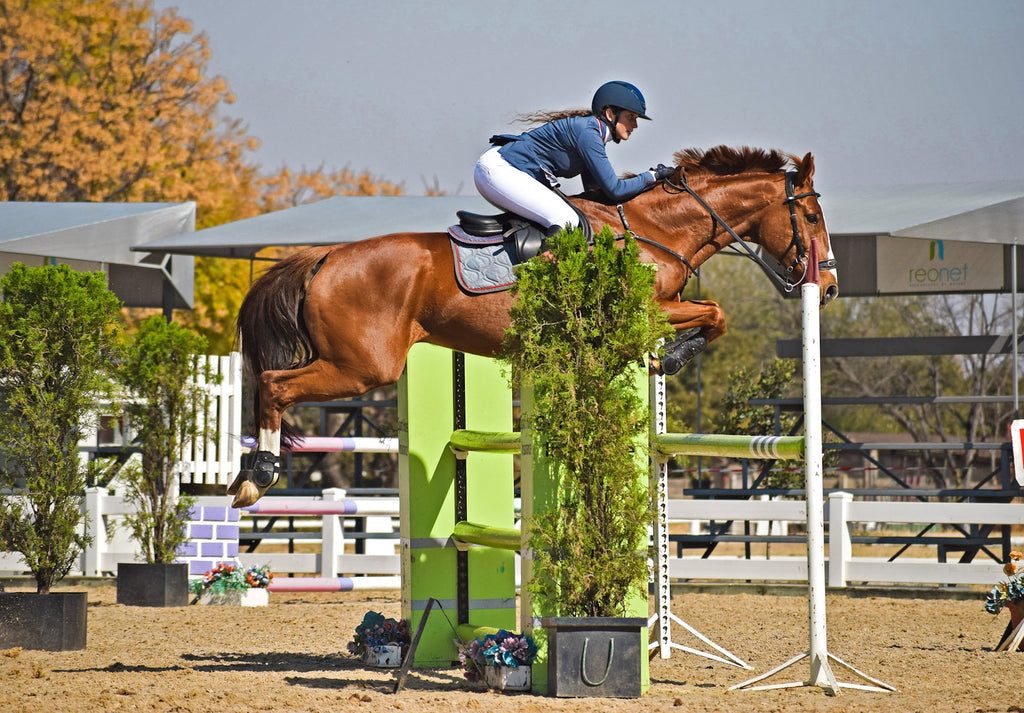
I actually have a full set of Scoots with studs (if needed) for the next competition we have on grass. So far, we have had no problems with traction in our Scoots, but the grass arenas in South Africa can sometimes get very slippery in the rainy weather so I like to know that we are prepared for that and have something to show for everyone who says “you can’t jump in grass without shoes and studs” I’m keen to try them on grass when the chance arises!
Are you Planning on Competing in any Future Show Jumping Events? What are you Aiming for?
Definitely! At the moment, shows have only just started up again after many weeks of tough lockdown here in South Africa. We have missed out on a lot of the show season, but are planning to make up for it from now on!
Currently, we are jumping the 1.20/1.25m classes as I still need to get my last few rider points before being able to compete in the open grades (1.30m+). The goal at the moment is to have good, clean rounds at our shows to rack up those last few points. Ideally, I’d love to be able to compete with Coogs in some of the more prestigious national shows in the open grades, but with the current COVID-19 climate and showground regulations, there may not be any of those for a while still, so we are just taking things as they come and making sure we have fun while doing it!
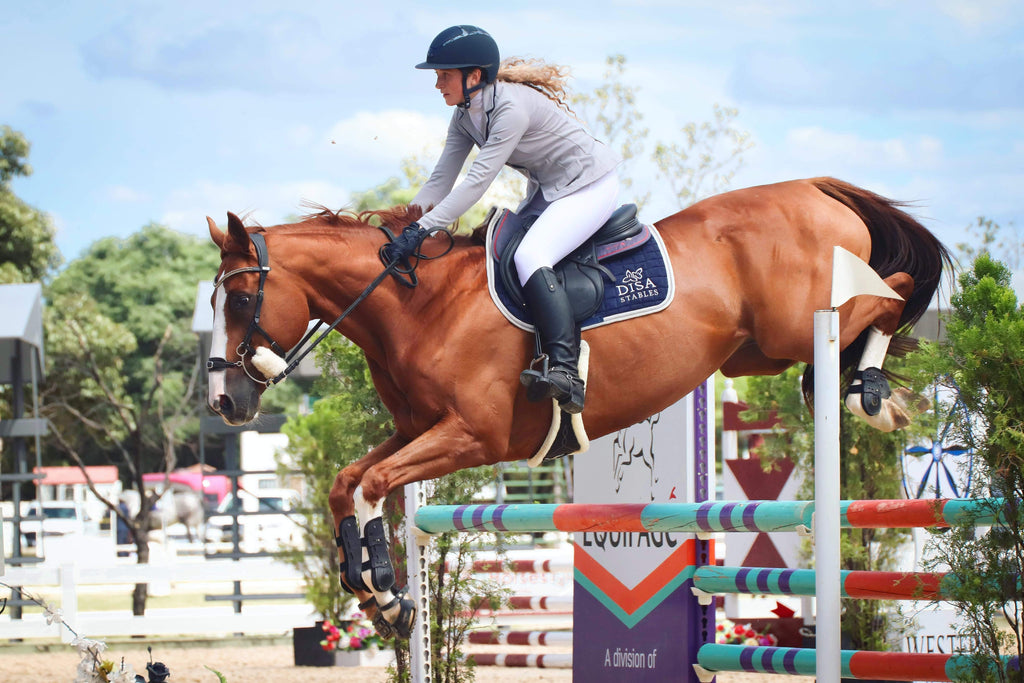
Is There any Advice you Could Give to Others Considering Transitioning Their Horse to Barefoot?
I think the biggest thing that helped me was researching everything I possibly could about it. I Googled everything I could think of - diets, different trims, how to condition newly barefoot hooves, what differences there were between a barefoot and a shod horse - I read blogs about others’ experiences, bombarded my barefoot trimmer with questions and photos, and most importantly, I made sure I was 100% involved in every part of Coogs’ transition to learn and observe the changes as we went along the path of transitioning to barefoot.
By researching everything I could, I created a realistic expectation of the transition process and also provided myself with some sort of information to apply to what I was seeing in Coogs. This not only gave me comfort that what was happening through the transition was normal, but it also helped me apply my knowledge to understand that there is way more to hoof function and care than I ever thought before! Everything seems easier when you have the knowledge to not just accept but to understand what you see.
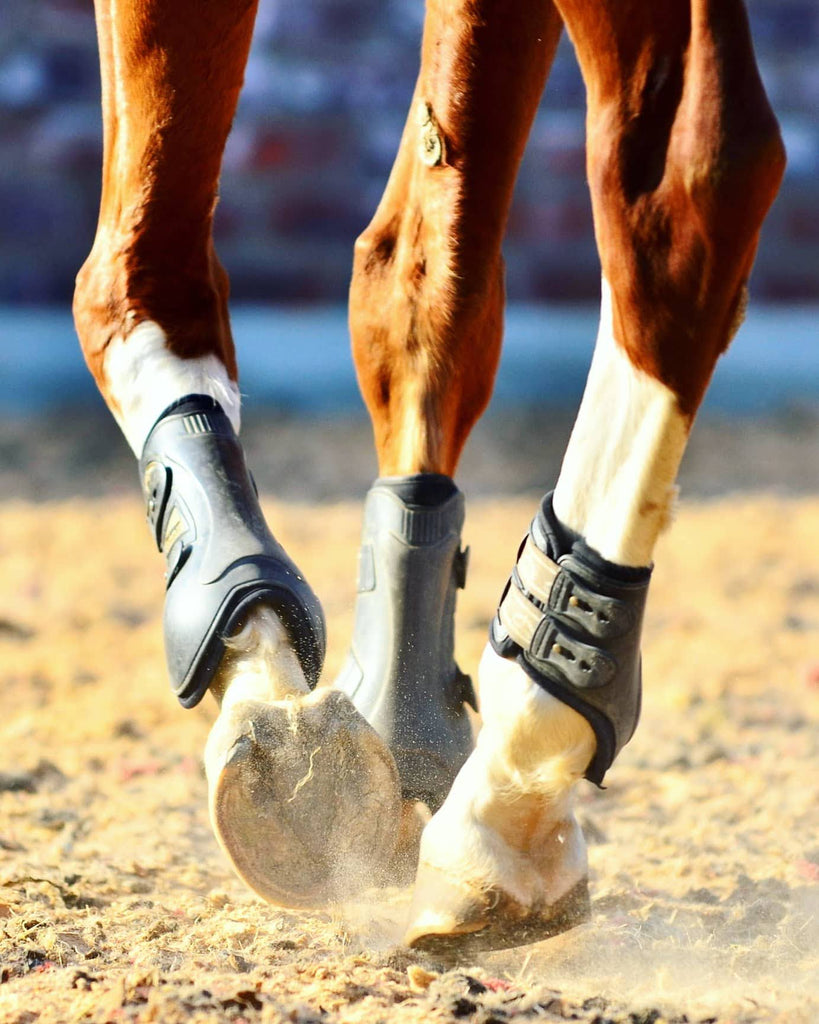
What is the Best way for People to Connect with you and Follow you and Coogs’ Journey?
The main platform that I use to document our journey is Instagram. You’ll find us through @crazyredchestnut, where I post regularly about Coogs and all the fun we get up to!
Building a Barefoot Community
The team at Scoot Boot believe passionately in the barefoot horse and strive to build a supportive community of barefoot horse lovers.
Find more information about using Scoot Boots here.
About the Author
Blog writer, Macy Wallis has been a member of the Scoot Boot team for 5 years. She has always had a passion for animal welfare and is currently studying to become a Veterinarian at James Cook University based in Northern Queensland. Through her time at Scoot Boot, Macy has gained extensive knowledge about the benefits of being barefoot and loves to share this with other horse owners.

